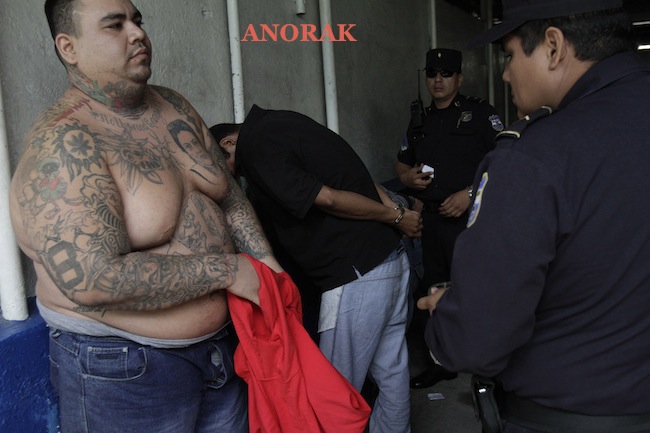In photos: the tattooed faces of MS-13 and 18th Street gang members
THESE are gang tattoos of inmates in South America prisons. The ornately tattooed Mara Salvatrucha and the 18th Street gang members are many. Time reports that El Salvador has over 55,000 gang members; San Pedro Sula, a city of half a million Hondurans, has over 35,000. These gangs are South American imports from Los Angeles, deported from the US.
Their facial tattoos are familiar. Their fighting is barbaric. Not included in this photo montage are our pictures from Saturday, Nov. 22, 2008 of prisoners at Pavoncito prison in Fraijanes, on the outskirts of Guatemala City holding up the decapitated heads of five alleged Mara Salvatrucha gang members. At least seven inmates were killed during a riot between rival gang members, five of which were decapitated, according to authorities:

In this Sept. 1, 2012 photo, an inmate belonging to the Mara 18 gang gestures inside the prison in Cojutepeque, El Salvador.

Mara Salvatrucha gang members attend a class at the Tamara Prison, 29 Kms (20 miles) north of Tegucigalpa, Honduras, Feb. 21, 2006. According to local human rights groups, a member can only leave a gang if he becomes a Christian and gives public evidence of his conversion, such as carrying a Bible at all times, going to church daily and becoming clean and sober but it stiil is no guarantee that his former gang will seek him out and kill him for abandoning them.
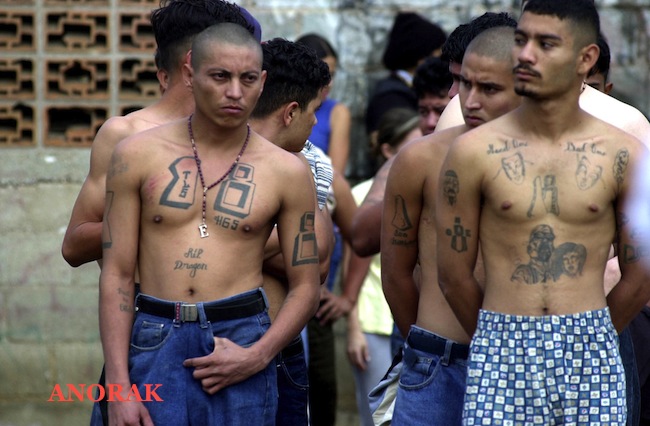
Suspected gang members stand in line after their were roundup by police at the Flor del Campo neighborhood in Tegucigalpa, Honduras, Monday, Aug. 18, 2003.
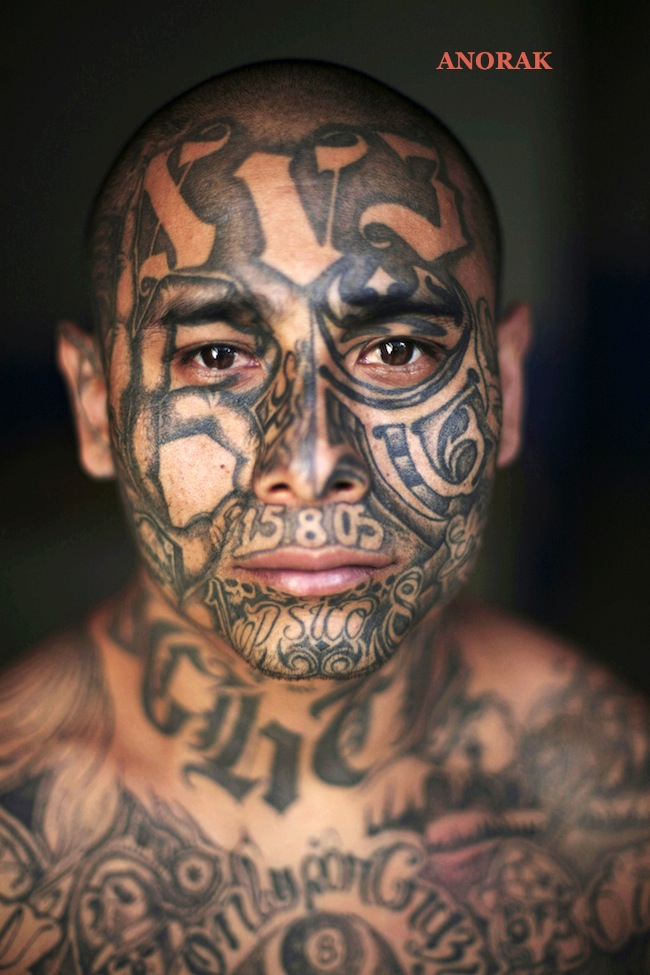
* A Mara gang member who identifies himself as “Psycho,” 23, poses for his portrait in prison in Chimaltenango, Guatemala, in this Oct. 30, 2007 photo.

Luis Alfredo Madrid, 22, a Mara gang member who identifies himself as “Smiling,” poses for his portrait in prison in Chimaltenango, Guatemala, in this Oct. 26, 2007. After anti-gang laws were approved in Honduras and El Salvador, and a string of killings in Guatemala that were committed by angry neighbors and security forces, gang members have stopped tattooing themselves and have resorted to more subtle, low profile ways of identifying themselves as members of those criminal organizations. Today, gang members with tattooed faces, are either dead, in prison or hiding.
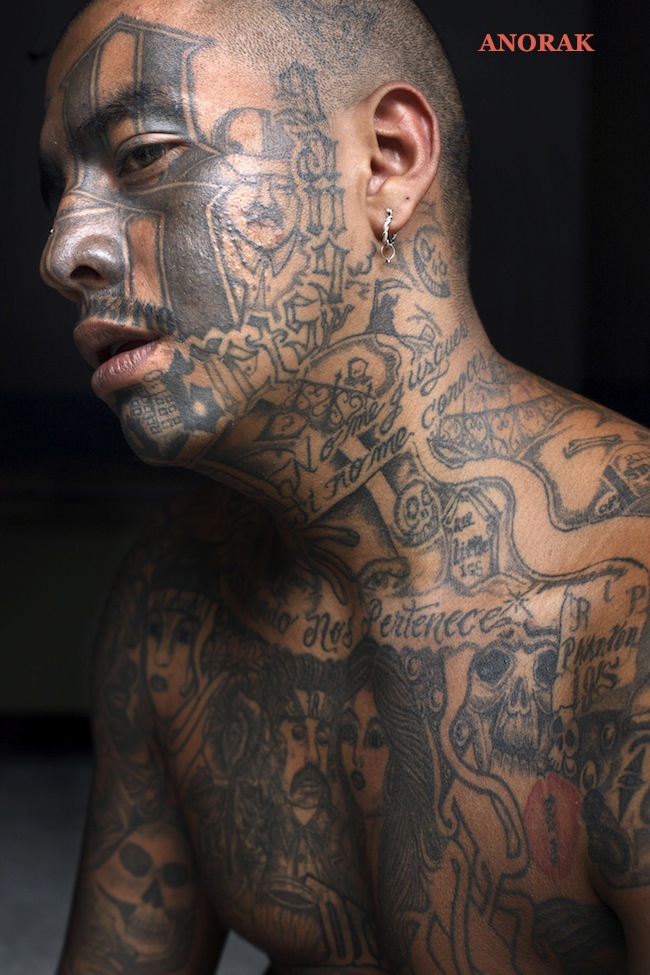
A Mara gang member who identifies himself as “Smoking,” 25, poses for his portrait in prison in Chimaltenango, Guatemala, in this Oct. 19, 2007 photo.

A Mara gang member who identifies himself as “Raton,” 21, poses for his portrait in prison in Chimaltenango, Guatemala, in this Oct 22, 2007 photo.
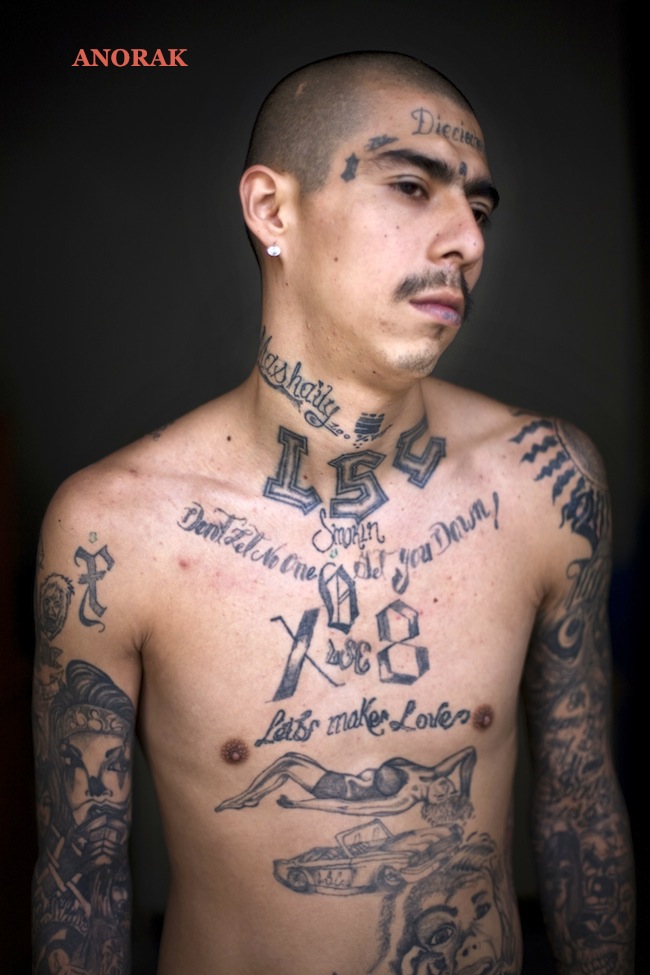
A Mara gang member, who identifies himself as “Psycho”, Guatemala
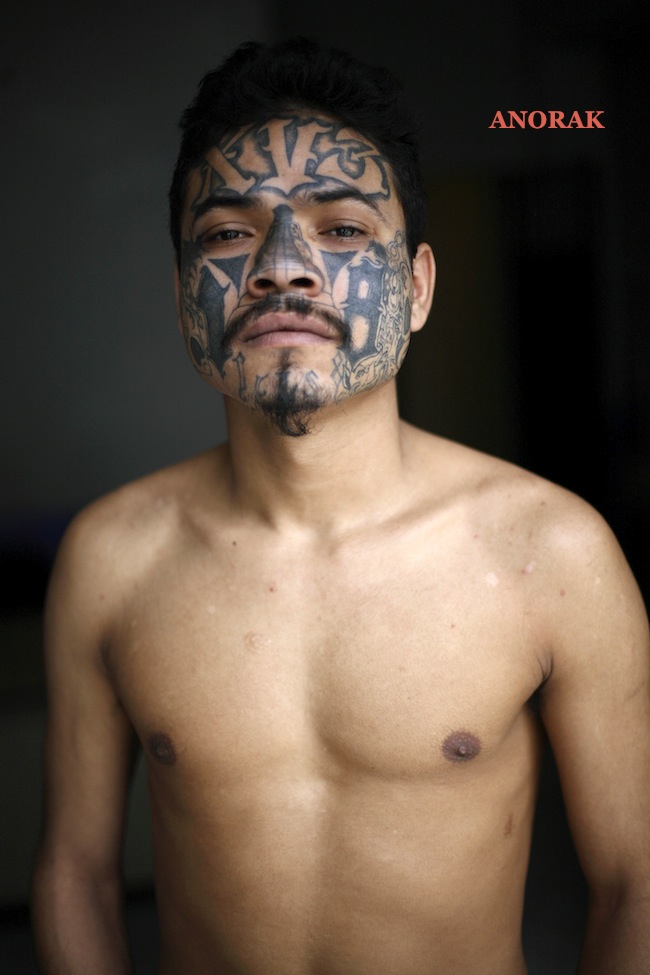
Hector Giovani Estrada Martinez, 31, a Mara gang member who identifies himself as “Liro Crazzy,” poses for his portrait in prison in Chimaltenango,
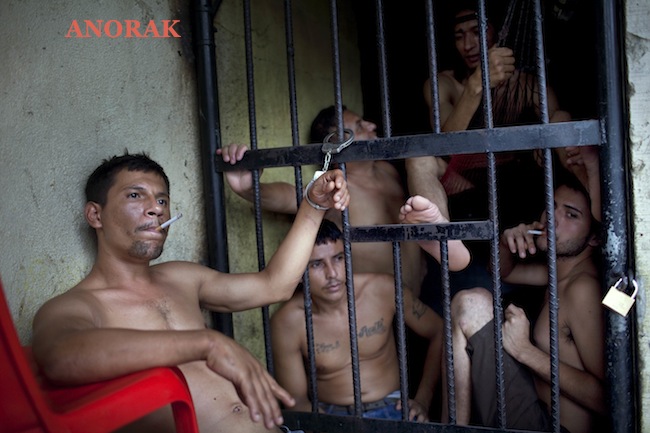
In this May 3, 2012 photo, an inmate, handcuffed to the bars of his cell as punishment for beating a guard, smokes a cigarette at the San Pedro Sula Central Corrections Facility in San Pedro Sula, Honduras. Inside one of Honduras’ most dangerous and overcrowded prisons, inmates operate a free-market bazaar, selling everything from iPhones to prostitutes. Guards do not cross into the inner sanctum controlled by prisoners, and prisoners do not breach the perimeter controlled by guards.
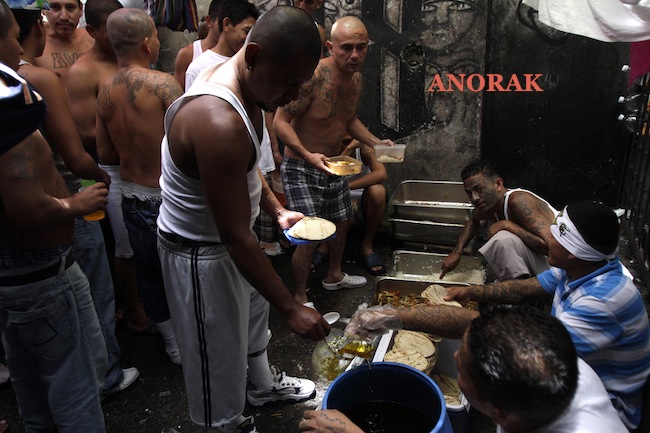
In this Sept. 1, 2012 photo, inmates belonging to the Mara 18 gang serve a meal for fellow gang members inside the prison in Cojutepeque , El Salvador. Six months after El Salvador brokered an historic truce between two rival gangs to curb the nation’s daunting homicide rate, officials are split over whether the truce actually works. The gangs, which also operate in Guatemala and Honduras, are seeking truce talks in those countries as well.
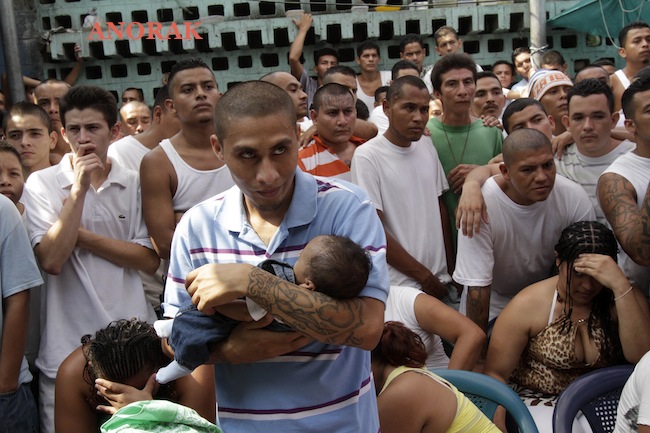
In this May 2, 2012 photo, an inmate belonging to the M-18 gang holds his child during family visit time inside the prison in Quezaltepeque, El Salvador.

In this July 22, 2012 photo, an inmate belonging to the M-18 gang stands inside the prison in Quezaltepeque , El Salvador.
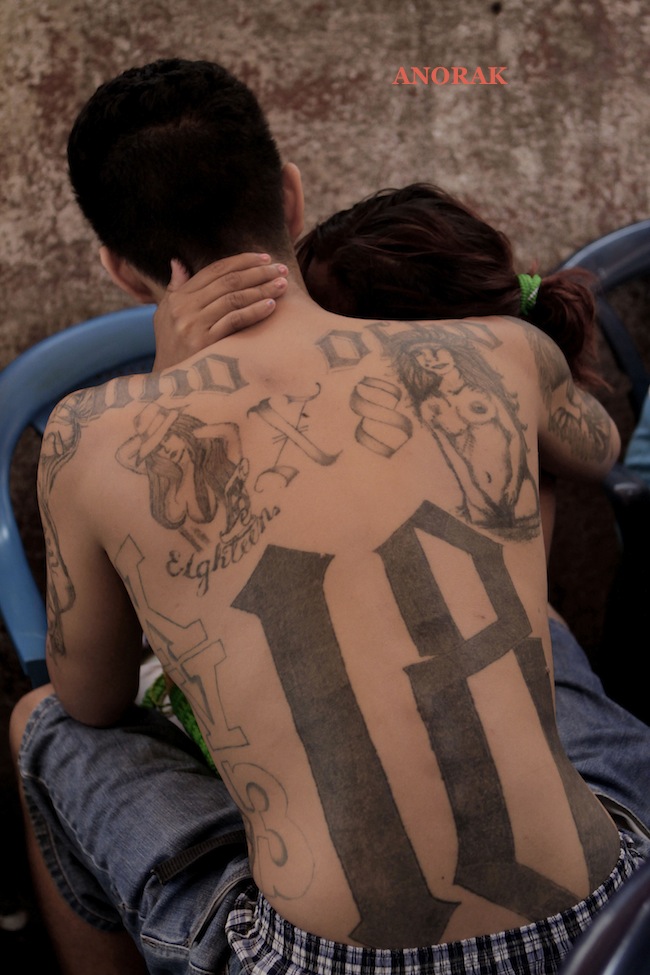

Hugo Omar Barahona observes as he is burned with an ultraviolet light one of the tattoos that identify him as a member of the Mara Salvatrucha at the Center of Community Health Father Octavio Ortiz, in San Salvador, El Salvador, Aug. 10, 2003. Barahona, 4 years old when he immigrated to Los Angeles with his parents and 21 when he was deported to El Salvador for robbery in 1999, was shot in the leg and back on April 28. The two gunmen, he said, apparently spotted his American gang tattoos
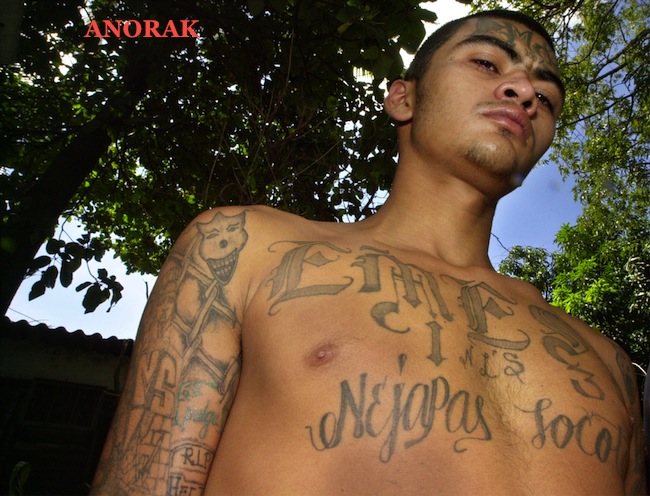
Mara Salvatrucha or MS gang member Jose Boris Martinez Montes, 19, also known as “El Extrano” “The Stranger, ” who is accused of murder, is seen after his arrest east of the capital San Salvador, El Savador Friday Oct. 22, 2004.

Mara Salvatrucha gang member “Snare”, 19, poses for a photo inside the Tonacatepeque center for minors, some 10 miles north of San Salvador, Thursday, Sept. 23, 2004.
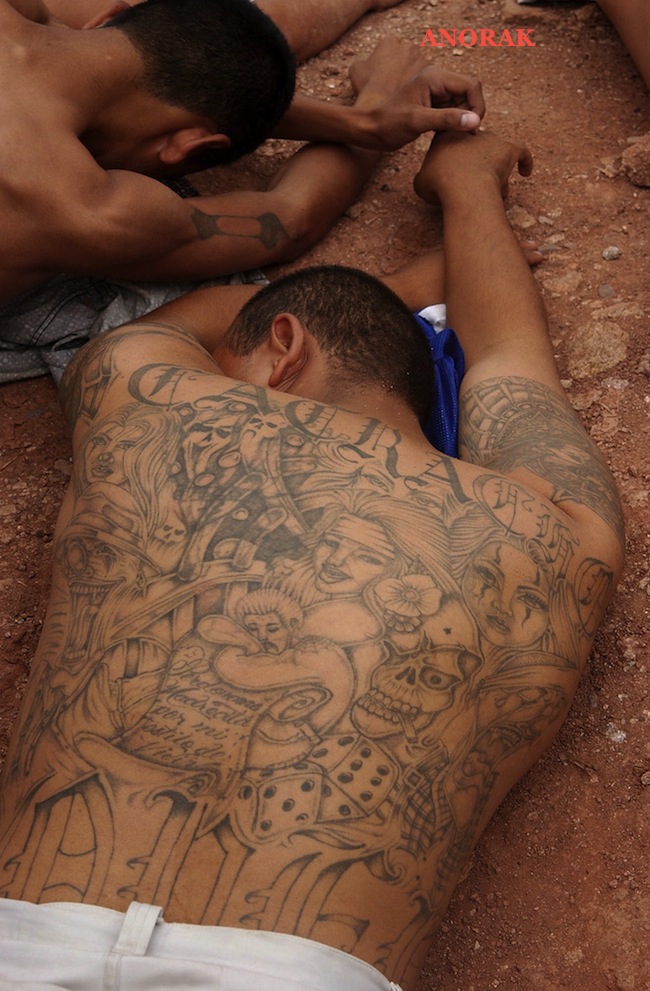
Two members of Mara gang, one of the MS 13 gang, front, and, the other of the Mara 18, back, are arrested during an inspection by Honduran President Ricardo Maduro and Security Minister Oscar Alvarez (not seens in the photo) of the Colonia Bellavista in Tegucigalpa, Honduras, Wednesday, July 2, 2003. The Honduran president sent a law to the National Congress on Tuesday, prohibiting gangs in the country.
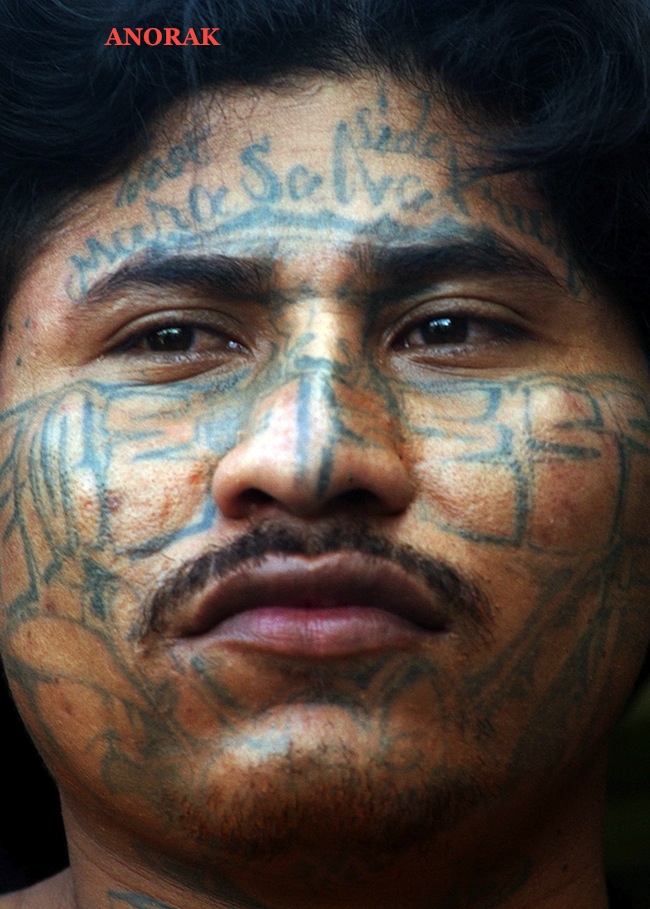
Honduran MS or Mara Salvatrucha member, known as “Esplinter”, is detained during an anti-gang operation in Tegucigalpa, Honduras, Wednesday, June 29, 2005. Today Central American leaders will participate in the Tuxtla and SICA (System of Central American Integration) summit in Tegucigalpa to discuss issues with crime and terrorism.

A gang member of the Mara 18 gang, known as “EL Criminal,” or the criminal, poses for the press after being detained by police in Guatemala City.
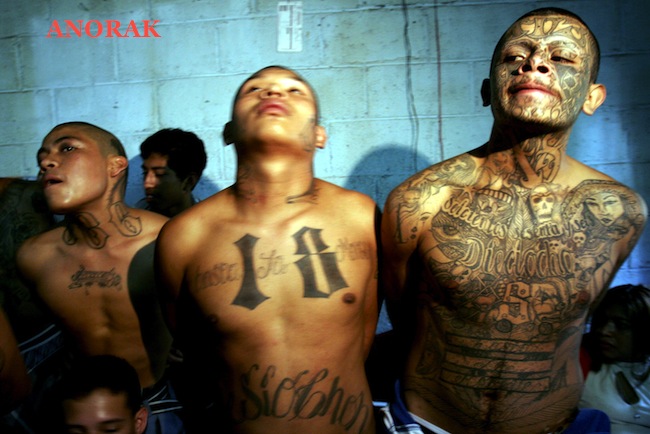
Gang members of the Mara 18 pose for the press after being detained by the police in Guatemala City.

Unidentified members of the gang Mara Salvatrucha who are incarcerated in the National Penitentiary of Tamara, 32km (20 miles) north of Tegucigalpa, Honduras, Thursday, Nov. 24, 2005. In a nation plagued by violent crime, much of it attributed to dangerous youth gangs, how best to control the delinquents has dominated the political debate leading up to Sunday’s presidential election. Ruling National Party candidate Porfirio “Pepe” Lobo Sosa proposes the death penalty. Liberal Party challenger Manuel “Mel” Zelaya prefers life imprisonment. Both offer to crack down hard on criminals who they say are terrorizing the country.

Juan Carlos Romero Amaya, aka “Campana,” of the Mara Salvatrucha, 24, is presented to reporters by the police in San Salvador, El Salvador, Monday, April 3, 2006.
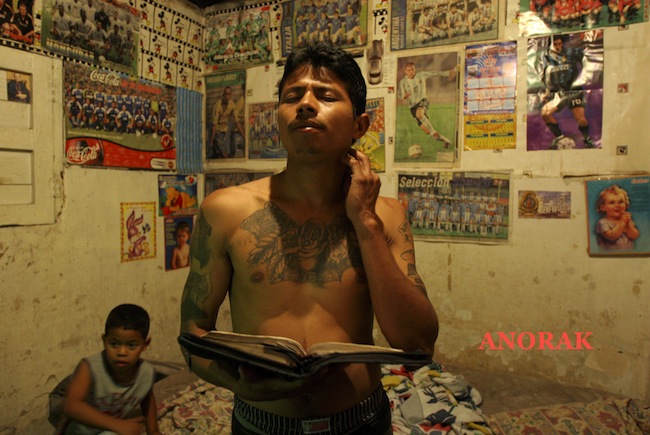
Former Mara Salvatrucha gang member Juan Gabriel Ucles, 24, beside his son , follows his routine and prays in his room before leaving the house on March 14, 2006 in Tegucigalpa, Honduras. Ucles was an active gang member for 7 years, and left the gang when he was ordered to kill his own wife, who was supposed to be a sympathizer of the rival gang Mara 18. After refusing the assignment he escaped from being killed, but not his wife, who was shot death by his old gang companions. He became Christian two years ago, and since then has been living with his two children in a secret address out of his old neighborhood.

Wilmer Matamoros, 23, an active Mara Salvatrucha gang leader, poses inside his cell at Tamara Prison, 29 kilometers, 20 miles, north of Tegucigalpa, Honduras, Feb. 21, 2006. Matamoros admits that he will never retire from the gang. For him the gang is his life, and a member should only leave by death.
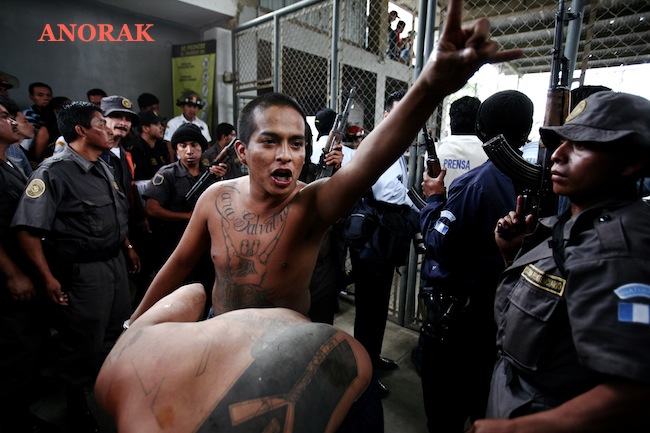
Gang members of the “Mara Salvatrucha” react as they are separated from the rest of the prisoners after a riot in the Pavoncito penitentiary, in Fraijanes, Guatemala, Tuesday, March 27, 2007. The prisoners refused to coexist with another group of prisoners, allegedly participants of the murder of the four policemen accused of killing the Salvadoran congressmen last month.
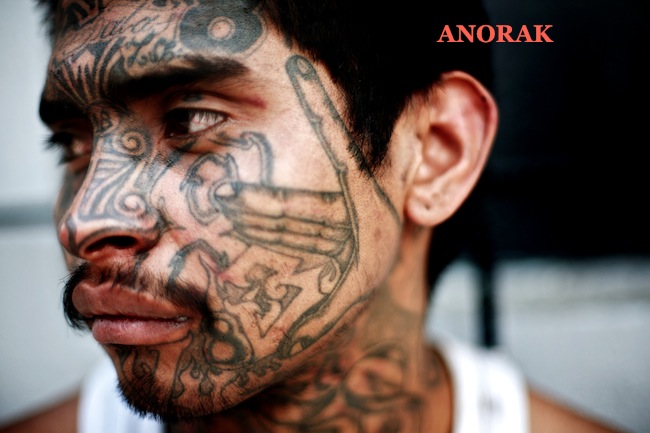
Fernando Garcia Torres, known as ‘El Coco’, member of the ‘Mara-18’ gang, suspect of the murder of a seven-year-old girl, waits in a police station after being captured by police officers, in Guatemala City, Wednesday, April 4, 2007. After he was captured, a group of angry neighbors burned down the place where he lived.
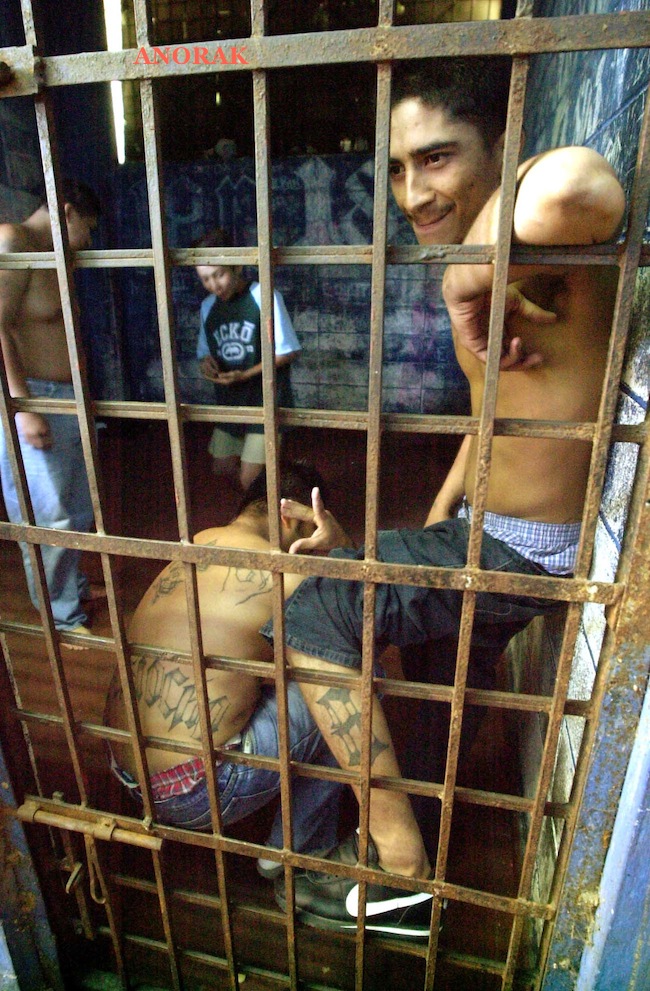
“Little Boy,” 23, a gang member of “Mara 18,” stands behind a prison cell together with other gang members in San Bartolo, east of San Salvador, El Salvador, Friday, Feb. 18, 2005.
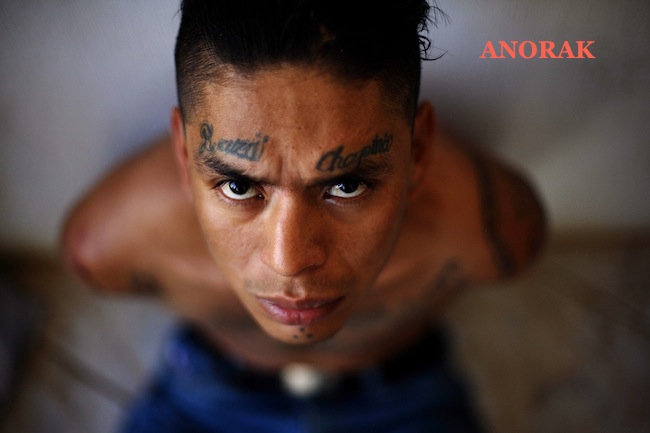
Ambrosio Ramirez Velazco, 26, sits at a police station in San Lucas Sacatepequez, Guatemala, Tuesday, April 24, 2007. Ramirez Velasco, a member of the Mara 18 gang, was captured with other 3 gang members after they allegedly kidnapped a woman for three hours.
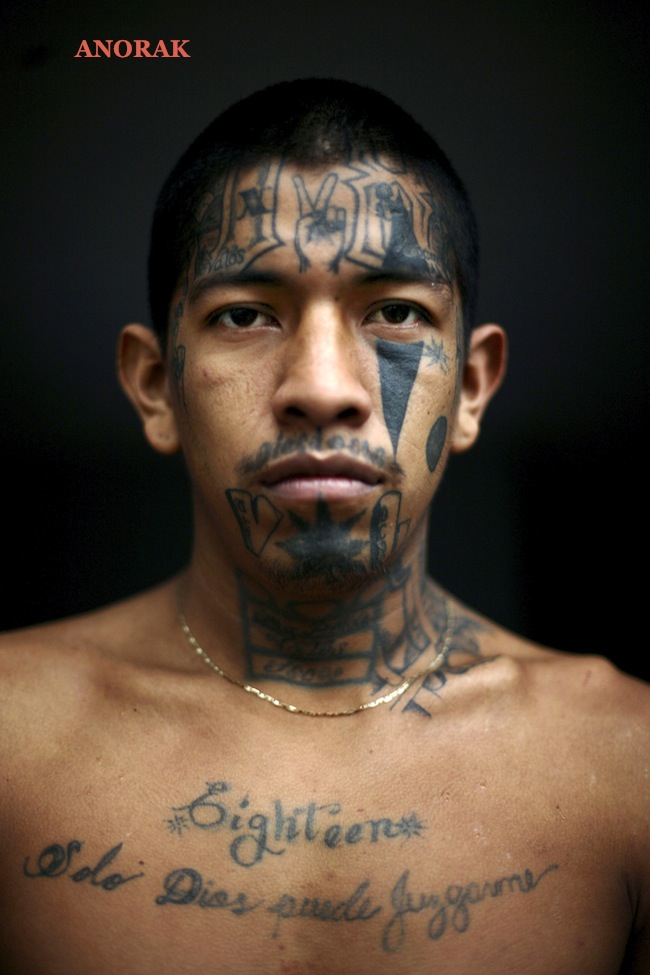
Mauricio Jose Solorzano, 23, a Mara gang member who identifies himself as “Pinky,” poses for his portrait in prison in Chimaltenango, Guatemala
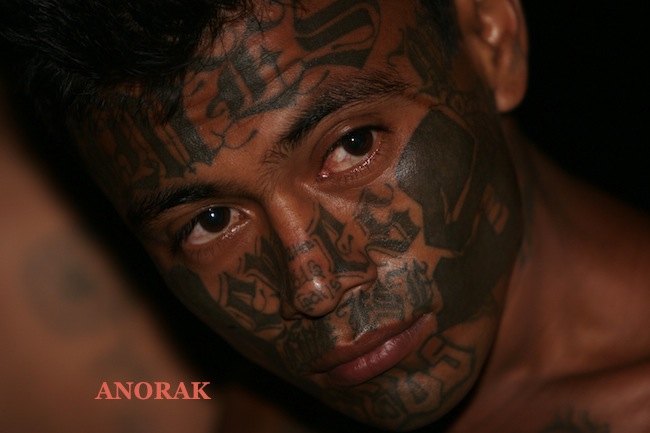
Manuel Gomez, an alleged Mara Salvatrucha gang member, is presented to the media after his arrest in San Salvador, Thursday, Feb. 21, 2008. Police arrested 23 alleged gang members wanted on homicide charges during the early morning operation.
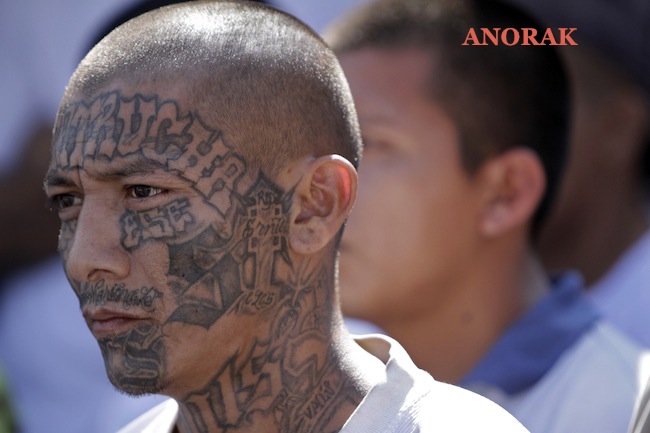
A Mara Salvatrucha gang member attends a mass celebrated by Archbishop Luigi Pezzuto, Apostolic Nuncio to El Salvador, and head army and police chaplain Monsignor Fabio Colindres at a prison in Ciudad Barrios, El Salvador, Monday, March 26, 2012. According to Dionisio Aristides Umanzor, known as El Sirra, leader of the Mara Salvatrucha gang, leaders of the Mara Salvatrucha and the Mara 18, El Salvador’s two largest street gangs, have reached a truce, reducing the country’s homicide rate, one of the highest in the world.
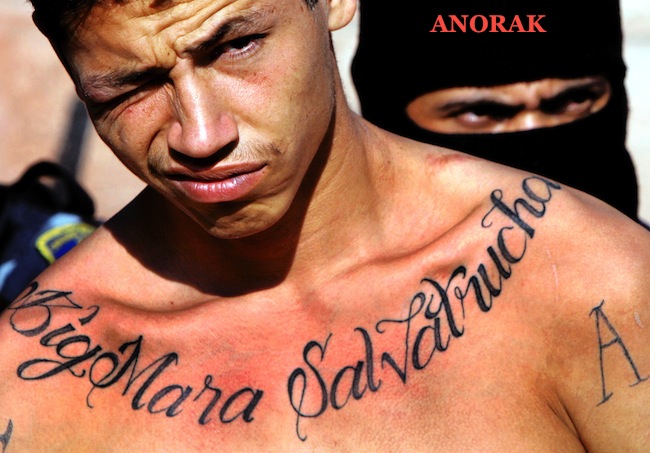
A gang member of the Mara Salvatrucha looks on after being detained during “Operation Thunder”, an operation designed to fight gang violence, in Tegucigalpa, Honduras, Wednesday, Sept. 13, 2006.
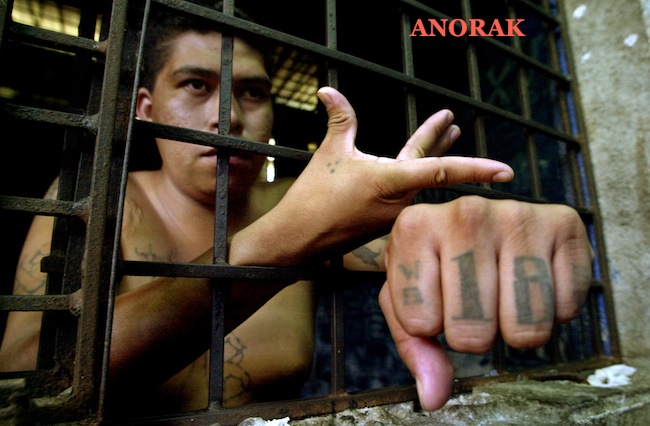
“The Brother,” 25, a gang member of “Mara 18,” stands behind a prison cell in San Bartolo, east of San Salvador, El Salvador, Friday, Feb. 18, 2005.
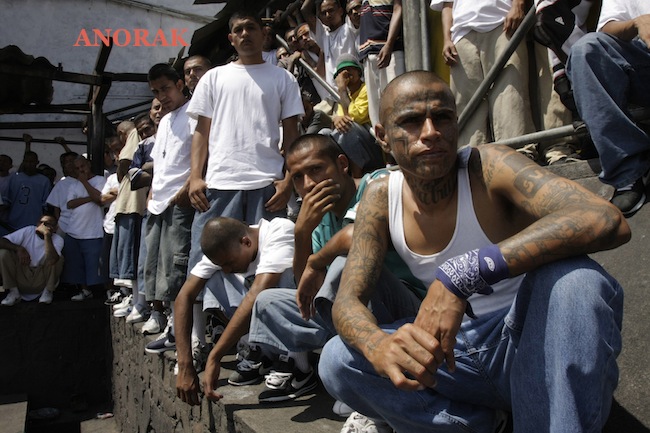
Mara Salvatrucha gang members attend a mass celebrated by Archbishop Luigi Pezzuto, Apostolic Nuncio to El Salvador, and head army and police chaplain Monsignor Fabio Colindres at a prison in Ciudad Barrios, El Salvador, Monday, March 26, 2012.

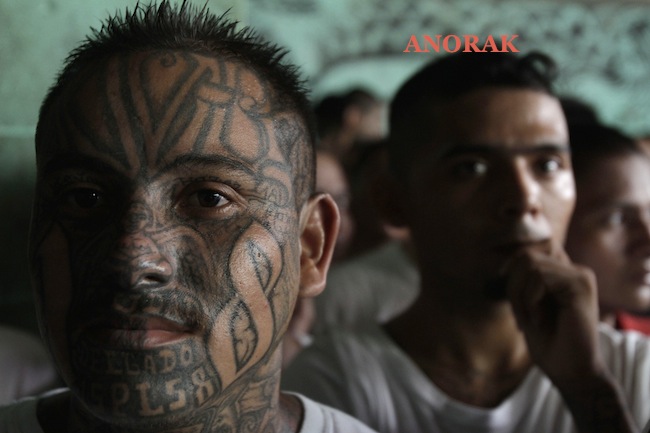
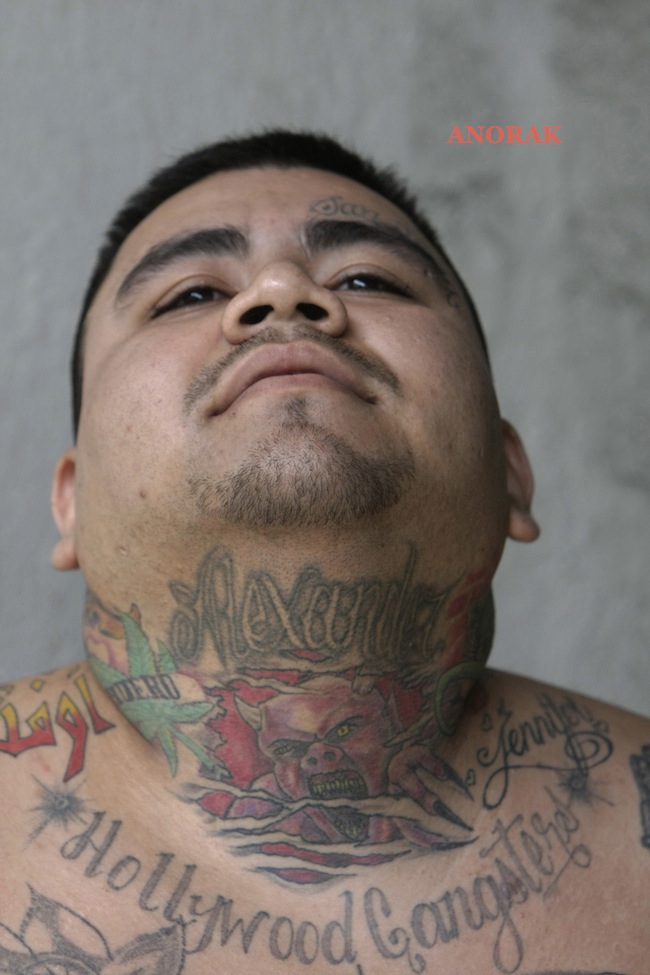
In this Aug. 31, 2012 photo, Larios Benitez, alias “Buda,” an alleged member of the MS-13 or Mara Salvatrucha gang arrested on murder and gun possession charges is shown to the press in San Salvador , El Salvador.
Posted: 25th, November 2012 | In: Key Posts, Reviews 10 Comments | TrackBack | Permalink


